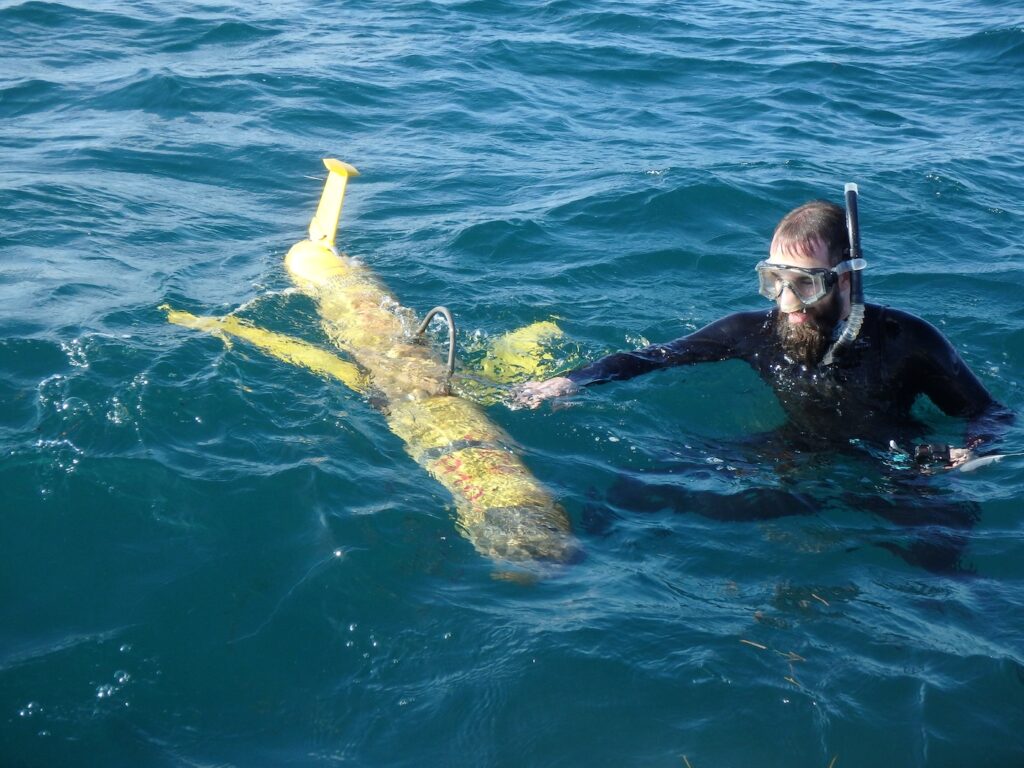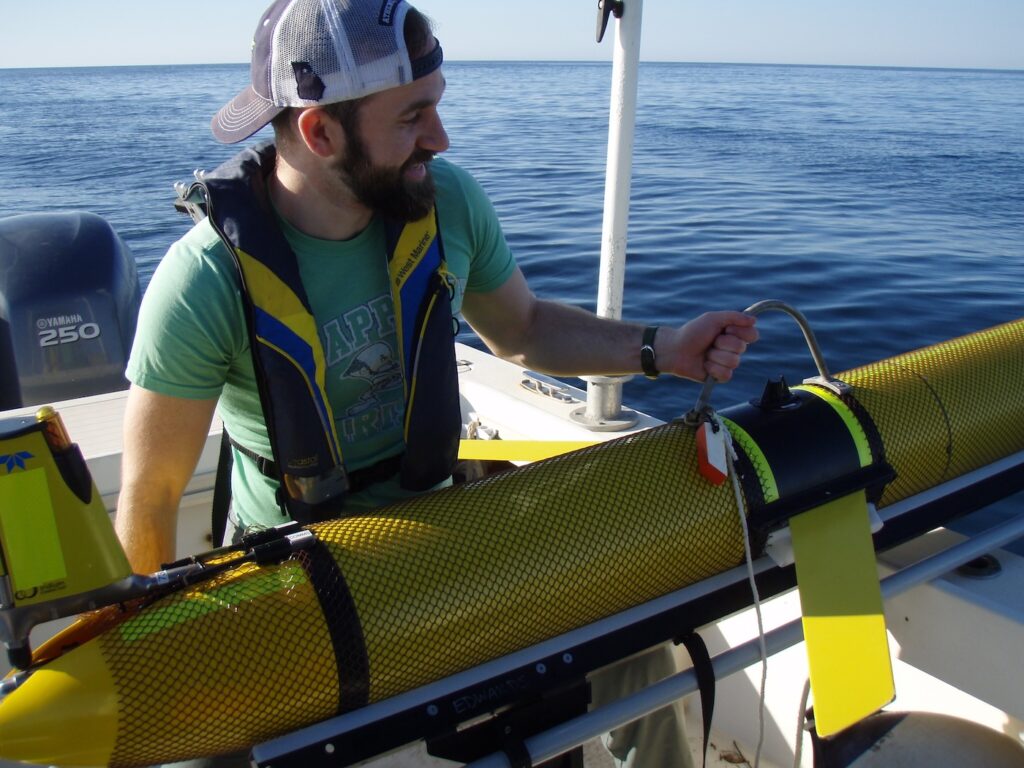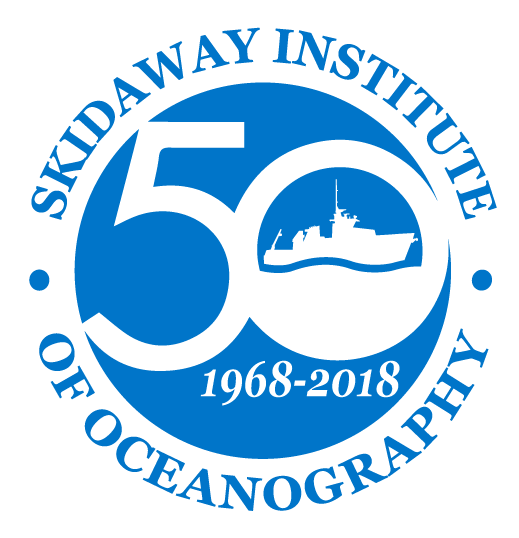
New Jersey native Frank McQuarrie is a doctoral student working in faculty member Catherine Edwards‘ lab at the University of Georgia Skidaway Institute of Oceanography (SkIO). McQuarrie received his bachelor’s degree in biological oceanography at Rutgers University, where he was deployed twice to Palmer Station Antartica for a total of nine months to sample the primary productivity on the Western Antarctic Peninsula as part of the Long-Term Ecological Research (LTER) team. At SkIO, he works with autonomous underwater vehicles (AUVs).
SkIO: What are you researching at SkIO, and who are you working with?
Frank McQuarrie (FM): I am a student in the College of Engineering but co-advised by Dr. Catherine Edwards at Skidaway. I’m studying the use of AUVs as platforms for acoustic research. We deploy these AUVs in the water for a month at a time to sample the physical properties of the water column, detect tagged-fish transmissions and listen for whales, to name a few tasks. My main focus is acoustic telemetry. That means putting a transmitter in a fish (or on a whale or shark) then listening for the signals. It’s complicated by the fact that those soundwaves travel differently depending on the environment. Times of day, times of year and tidal currents all change the distance we expect to hear them. We’re working at Gray’s Reef, a habitat for snapping shrimp that have a habit of snapping loudly and interfering with our signals, so now I’m forced to understand animal behavior.

SkIO: What inspired your track of study?
FM: Jersey beaches got me here, no doubt. But I loved the physics and the idea that we can model and understand these moving water masses, from huge gyres to the small boundary layer currents. Robots have always been awesome, and using them to study the ocean is even better.
SkIO: Why did you choose UGA/SkIO?
FM: My wife hated the cold, and I knew if I picked somewhere in the Northeast that I’d be single. Plus Skidaway has a long legacy of collaboration and interesting physical oceanography. The South Atlantic Bight was characterized right here.
SkIO: Where do you see yourself in 5-10 years?
FM: Working in oceanographic engineering, hopefully continuing some of my work in coastal soundscapes.

SkIO: What do you do for fun, outside of your work/studies?
FM: I host poker games for friends, and I love board games. I also play with my dog, Peaches McCorgi.
SkIO: What advice would you give a high school or undergraduate student interested in a similar track? How can they get to where you are?
FM: Take a year or two off before graduate school. Make sure it will enable your next step. Think about what you want to do after. Graduate school is not always an upward move, it can be lateral. Time is a currency, and spending six years doing something because you felt you had to isn’t the way to go.
About SkIO
The UGA Skidaway Institute of Oceanography (SkIO) is a multidisciplinary research and education institution located on Skidaway Island near Savannah, Georgia. The Institute was founded in 1967 with a mission to conduct research in all fields of oceanography. In 2013, SkIO was merged with the University of Georgia. The campus serves as a gateway to coastal and marine environments for programs throughout the University System. The Institute’s primary goals are to further the understanding of marine and environmental processes, conduct leading-edge research on coastal and marine systems, and train tomorrow’s scientists. For more information, visit www.skio.uga.edu.


